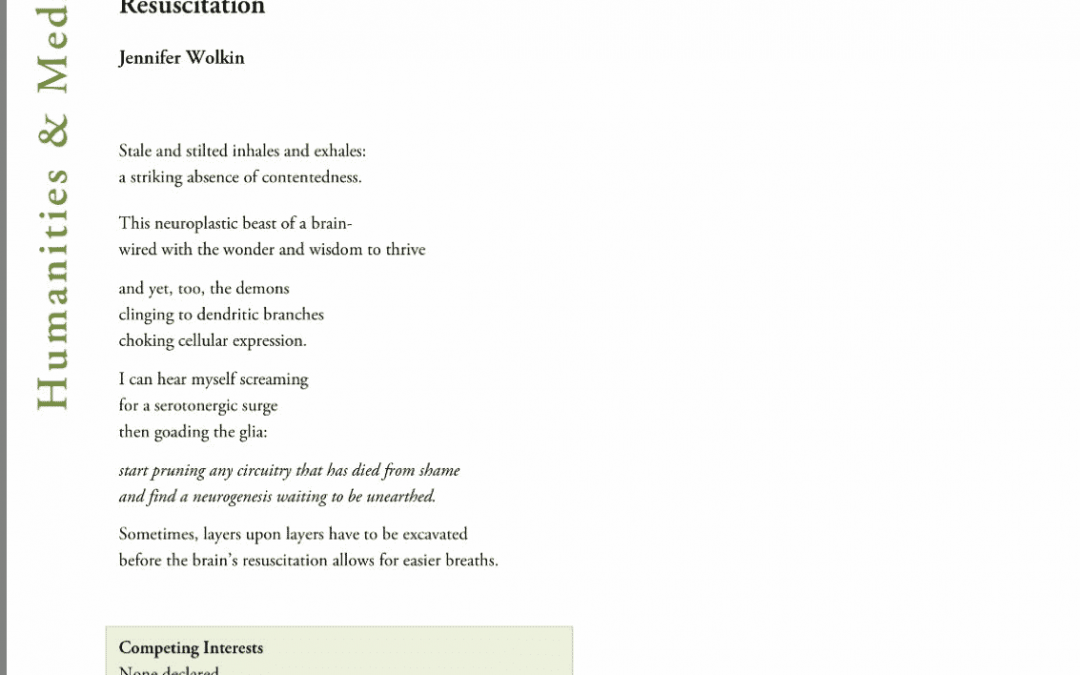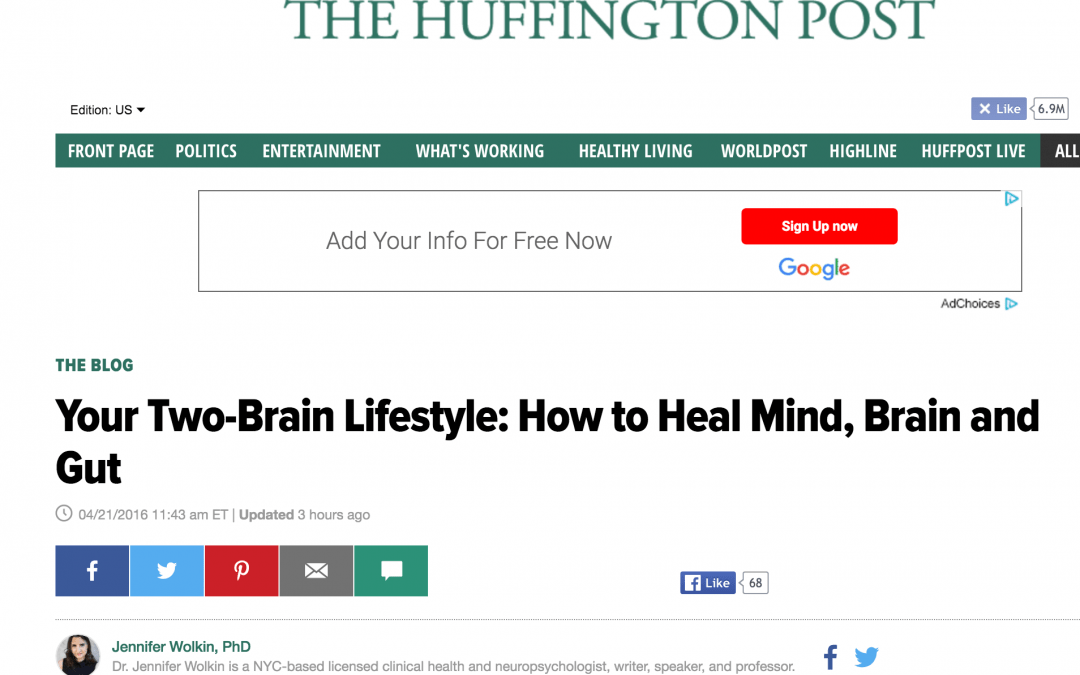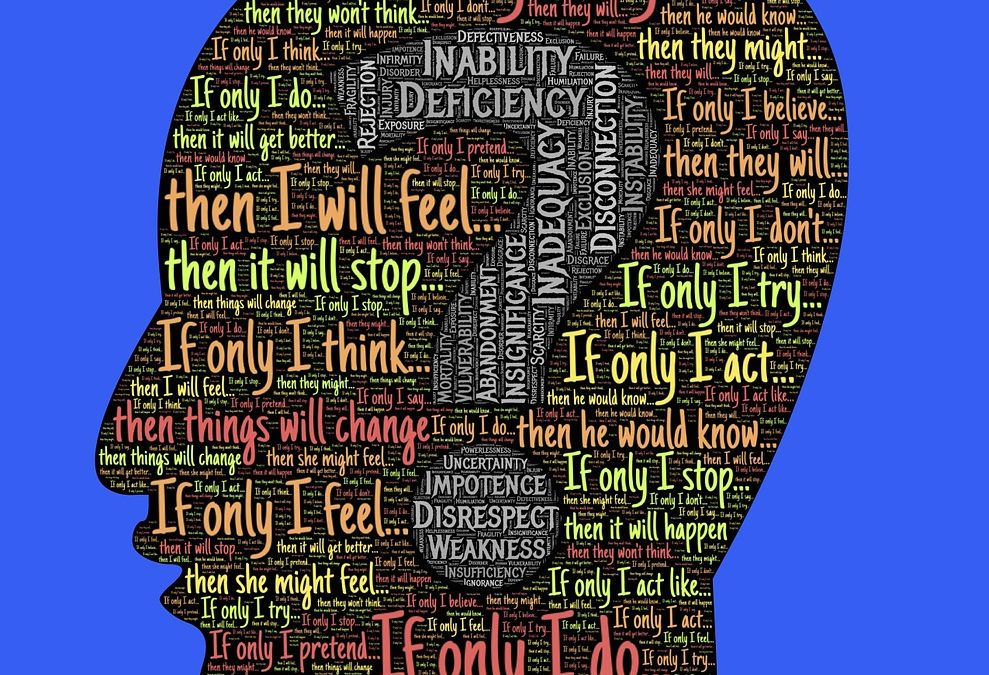
by Jennifer Wolkin | May 4, 2020 | Mindfulness, Stress, Wellness
I am writing to you at this unprecedented time in our history. A time of collective, global trauma. We’re scared. We’re vulnerable. We’re mentally exhausted. People are saying to stay positive, but I want to validate your emotions, you are safe from the catchphrase ‘good vibes only’ here.
There is so much beyond our control these days. As humans, we don’t like uncertainty at the best of times, at baseline. We thrive on timelines and surefire deadlines. So we are all trying our best to find equanimity, mental calmness, amidst this uncertainty.
It is my hope that these 17 #StayCovidCalm actionable tips, that you can take today, will help you focus on treating yourself with kindness during this difficult time. You don’t have to have a productive pandemic, just take care of yourself to the best of your abilities, and that’s more than enough.
Set media/news boundaries:
Be very discerning of the media you are consuming (stick to known reliable sources), and set boundaries around when and how you consume media. I’d recommend not to watch it right before sleep, and to set specific times during the day to read or watch and have a cut-off time.
- It won’t help to check news every 15 minutes. This won’t lead to any more productive action, and will only serve to induce panic. Keep yourself updated with ONLY important, helpful facts from well-informed sites. Saturating on social media can literally overwhelm our brains.
- It’s also very reasonable to set boundaries with people who are sending you information. If someone is texting you with information every hour, and it’s creating anxiety, do gently let that person know that this isn’t serving you. Take appropriate action.
- Keep prepared, because it is the mindful thing to do for oneself and society at large. This means do what is recommended with as little worry as possible that you’re not doing enough. If you’re doing what’s recommended, then you are doing enough.
Allow yourself to feel all the feels:
It is not only okay, but a necessity to allow ourselves to experience the gamut of emotions we encounter, and not just try to stay positive and feel “good vibes only,” which sometimes is a message we confront on social media. Allowing ourselves to feel all we are feeling, without shame or judgment, and then seeing that we can move through these emotions, is essential for mental health right now. Our mind space is big enough for all the feels, even seemingly contradictory ones. In fact, allowing space for them is healthy. I call this “feelings the ands”, as in, “I feel this AND this.”
Practice gratitude:
while it is important to allow yourself to have all the feels, it can ALSO help to take a moment to consciously express gratitude at least once each day and to take perspective. So, before you go to sleep, or after waking up, see if you can list and reflect upon three things in that very moment you feel grateful for and, if needed, you can use the same three each time. Examples include: loved ones, health, healthcare providers, leadership during this time, roof over one’s head, groceries, grocery shop personnel, the sun coming out, a breeze, the warming weather.
Create structure and routine as much as possible:
At baseline our brain’s like a sense of routine, it helps maintain perceived control, and our brain veers towards “order”, especially during a time of great uncertainty. Of all times, this is a time to build in some kind of routine to your day. This could mean going to sleep and waking up at the same time. This could mean doing virtual work in the same space every day. This could even look like a scheduled afternoon walk, as long as we are abiding by social distancing.
Virtually connect:
Social connection is paramount during this time. Even if it’s not your ideal to connect virtually, give yourself a healthy push to reach out to be in touch with and be held by a community. Even if we don’t love it, we must push ourselves to connect with others – social connection is key and crucial, even virtually. It may not be ideal but it is something that will keep you safe and healthy.
Find creative outlets:
Creative expression connects us back to ourselves. It also allows us to use our mind in ways that promote a sense of freedom in a time when we are feeling locked down.
Journal:
Record history from your first-person perspective if this will help you create a sense of purpose. During so much unknown, having a call to action that creates a sense of meaning can go a really long way towards lifting depressed feelings.
Pray:
Reach out to whatever you believe is out there that is greater than you. This allows us to surrender some of the burden that we might feel to have all the answers, and the need to problem solve and fix what is beyond our power to do so.
Connect to something greater/give back:
Asking how can I be of service often helps us get outside our own selves and can soften depression and anxiety. It gives us a sense of purpose, to create meaning at a time when not much seems to make sense.
Focus on what we can control vs. what we can’t:
There is so much we can’t control now, and also, at the same time, we have been given guidelines to adhere to. If we allow ourselves to follow what’s recommended, and surrender into the knowing that we can’t control much more, we might feel some anxiety relief.
Practice radical acceptance:
Practice radically accepting the present-moment for what it is. This doesn’t mean we roll over and passively resign to whatever circumstances we are experiencing. What it means is totally and completely accepting that the reality of this moment, is, in fact, the reality of this moment, and that to resist present-moment reality is not only impossible, but creates stress. Radical acceptance is a practice based on the idea that although we can’t control for the most part how life unfolds, we can, in fact, control how we perceive or react to life unfolding. Fighting against reality, even if said reality is painful, is likely to cause suffering beyond that of the reality itself.
Exercise:
Both weight training and cardio have mental health benefits. This can mean jumping jacks or jogging in place, or using weights you have at home while following along to a YouTube guided workout. Many gyms are also doing virtual sessions. Weight training exercise is a life force and a crucial part of mind-body-brain hygiene. Exercise has been shown to raise serotonin levels, the neurotransmitter that many antidepressants focus on producing. Exercise can also elicit endogenous endorphins, the body’s natural painkillers, and of course, bring more oxygenated blood to the brain.
Stretch:
Just as crucial as exercise is, so is stretching regularly, to ease tension and stiffness, especially if we are sitting more while in quarantine. Particularly, try to make time to stretch my psoas muscles. They are the only muscles that connect the spine to the legs, attaching from the 12th thoracic vertebra to the 5th lumbar vertebra through the pelvis and down to the femurs. Needless to say, the psoas muscles, therefore, play a crucial role in one’s core structural wellness, especially the psoas major, the biggest muscle of the group.
- The absolutely mind-blowing understanding regarding the psoas muscles though, is that they have been actually touted as instrumental to one’s mental well-being as well! The psoas muscles flank the diaphragm and the many connections between the psoas muscles and the diaphragm literally link these muscles to our breath, which is sensitive to fear. When we are in a state of fear, the breath is shallow and constricted, and the diaphragm isn’t being used to take deeper, calming breaths. The psoas feels this, and holds the fear. This means that if we are in a constant fight or flight mode, due to chronic stress, then our psoas muscles are also chronically stressed and constricted. This would also mean that an over-constricted psoas, caused by poor posture for example, could actually elicit fear.
- So, after hours and hours of sitting in a position that constricts our psoas muscles, it’s no wonder we have a visceral feeling of tension that seems to envelop our minds, bodies, and brains. Stretching my psoas is literally like a sigh of relief. There are videos online to help guide in how to find the psoas and how to stretch it with the most significant impact.
Maintain physical wellness:
Mental health and medical health are inextricably intertwined.
- Eat regular meals: Try to eat set meals to nourish yourself. If you tend to overeat during a stressful time, see if you can take a step back, and self-soothe with other more adaptive techniques like breathwork, or distracting with a conversation with a friend. If you do eat more than you want, don’t judge yourself. This is an ongoing practice.
- Limit caffeine: If you tend to panic, watch your coffee intake. Stick to one cup a day or less.
- Support your immune system through diet: Of course, ask your general practitioner, certified health coach, nutritionist or functional medicine doctor before you make any changes to your regimen. Generally speaking, I suggest whole grains, high protein, berries, leafy greens, including spinach and kale.
- Decrease processed sugar: Processed sugar is highly inflammatory, and does not support immunity, and can also lead to mental health challenges.
- Supplements: I defer to your general practitioner here too, however, generally speaking Vitamin C, D3, and Zinc has been suggested to boost immunity. Turmeric and ginger can also play an anti-inflammatory role.
Maintain mental health care:
Maintain all regimens you were usually doing for mental health. Sometimes in crisis we let things slide, but please continue your psycho-pharmacology regimen if you have one. If you have a therapist, connect virtually. If you don’t have a therapist, you can still find one during this time, many are taking new patients even virtually. Psychologytoday.com has a search engine for therapists in your area. Also, talkspace.com and betterhelp.com are great options.
Be gentle, be gentle, be gentle:
I listed a lot of things. But ABOVE all, be gentle with yourself. Find adaptive ways to cope, and also, if you are just able to get by and breathe and do the best you can, it’s okay. There is no end to the beginnings we can take. In any moment, we can try to engage in these coping skills, and if the next moments they seem harder, we can try again in another.
Practice mindfulness and mindful living:
Whether we use an app to help guide us through a mindfulness practice, engage in deep diaphragmatic breathing, incorporate mindfulness into any daily activity, or living more mindfully, this is a way to 1. Sit with uncomfortable emotions without needing to escape them 2. Offer oneself gentleness, compassion, and nonjudgment 3. Elicit the relaxation response.

by Jennifer Wolkin | Jul 4, 2018 | Blog, Mindfulness, PTSD, Wellness
There is research that those experiencing PTSD reported improved well-being in response to poetry therapy. This might be the case because a hallmark of having experienced trauma is the subsequent difficulty processing the experience, which results in avoiding and suppressing associated emotions/memories.
Poetry therapy has provided an outlet for those suffering with PTSD to start to integrate many of these feelings, and even more so, to start to reframe the traumatic experience.
Poetry therapy itself is a bit abstract to describe, but there are a few ways to engage with it. Here is a multi-model poetry therapy practice developed by Nicholas Mazza, the founding and continuing editor of the Journal of Poetry Therapy.
According to Mazza’s model, poetry therapy involves three main components:
- Receptive/prescriptive: This part of therapy involves the clinician/therapist reading a poem out loud, and then subsequently encouraging the client to react to it, either verbally, non-verbally, or both. The therapist might even prompt: “Is there a particular line in the poem that resonated with you?”, or “I noticed you started to become teary-eyed when I read this line…”
- Expressive/creative: This entails actual creative writing. The therapist promotes stream of consciousness writing that might aid in discovering blocked emotions, parsing felt emotions, or retrieving memories that are difficult to articulate. The therapist might offer a prompt to help someone get started.
- Symbolic/ceremonial: This includes working with metaphor/simile to help further explain emotions that are hard to describe in a more literal sense. The ceremonial part may consist of writing a letter to someone they may have lost and then burning it.
The efficacy of poetry therapy is still being studied. Most of the empirical evidence for its effectiveness comes through James Pennebaker’s (a pioneer in the field of Positive Psychology) work in the therapeutic use of expressive writing. His studies have indicated that the use of expressive writing, even for as little as 15 minutes over the course of 4 days, resulted in positive health effects. In addition, his initial work dealt with the use of expressive writing to heal wounds from traumatic stressful events.
One case in point is that in the aftermath of 9/11, poetry was utilized as a healing mechanism. According to a New York Times article on October 1, 2001:
“In the weeks since the terrorist attacks, people have been consoling themselves—and one another—with poetry in an almost unprecedented way … Improvised memorials often conceived around poems sprang up all over the city, in store windows, at bus stops, in Washington Square Park, Brooklyn Heights, and elsewhere. …”
In some ways poetry gives us the way to speak about the unspeakable. It is more and more common for those suffering with medical challenges to write their story, many times in poetic form, to aid in their own healing. As always, it is crucial to note that just like with mindfulness approaches to trauma, poetry therapy is most often used in conjunction with other therapies.
On a personal note, I’m particularly drawn to this type of therapy and recently started studying for my MFA at Queens College. I am touched by the profound pain that is both individually and collectively felt, how this pain can displace someone from others and their selves, and yet, the profound capacity for resilience, healing, and growth. Aside from writing my own work, I hope to employ poetry as a technique to help my clients say what they couldn’t otherwise say.
Here’s an example of a poem that I recently published in the British Journal of Medical Practice in this vein:


by Jennifer Wolkin | Apr 22, 2016 | Brain Health, Mindfulness, Wellness
This blog post originally appeared in The Huffington Post.

Less might sometimes be more, but two brains are most definitely better than one! How extraordinary then that research continues to confirm a second brain that resides in our guts.
Yes, our gut has its own neural network, the enteric nervous system (ENS). Our ENS doesn’t wax philosophical or make executive decisions like the gray shiny mound in our skulls. Yet, in a miraculously orchestrated symphony of hormones, neurotransmitters, and electrical impulses, both of our “brains” communicate back and forth.
This connection is actually what accounts for those proverbial butterflies in our stomach and has vast implications on our overall health and wellness. Changes in the diversity of the trillions of bacteria that reside in our gut (called the gut microbiota) can impact upon our mental state. And on the flip side, psycho-social factors, including the way we think and feel, have been implicated in gut problems.
Given my personal experience with SIBO, and professional experience with hundreds of women suffering from depression, anxiety, and GI difficulties, I enjoy teaching about how to live what I like to call a “Two-Brain Lifestyle.”
Here are four ways to begin your two-brain lifestyle journey:
1. Diet:
“Diet is a central issue when it comes to preserving our gastrointestinal health, because by eating and digesting we literally feed our gut microbiota, and thus influence its diversity and composition.” –– Professor Francisco Guarner (University Hospital Valld’Hebron, Barcelona, Spain)
There is more and more research linking diets to both our gut and brain health. Certain diets elicit a healthier bacterial balance. Overall, and generally speaking, a diet rich in whole, unprocessed, unadulterated, and non-genetically modified foods help to maintain a proper pathogenic gut bacteria ratio. More specifically, the following are key recommendations:
A. Probiotic Intake:
Probiotics can be found in foods such as yogurt, or kimchi, and can also be taken in supplement form. Among other benefits, probiotics keep the bacterial ecosystem in our gut healthy, which in turn helps keep us healthy overall.
The positive impact of probiotics on gut flora has been widely studied in the last few years. In a 2013 study in Gastroenterology, 12 of 25 healthy women ate a cup of yogurt twice a day for four weeks. The rest of the women ingested no yogurt. All women had pre and post brain scans while being asked to respond to a series of images depicting different facial expressions. Results indicated that the women who ate yogurt were calmer when shown various emotions than the control group. Showing that the yogurt changed the subjects’ gut microbiota, which also modified their brain chemistry.
This means probiotics are potential game changers when treating anxiety and mood difficulties.
B. Low Sugar/Low Simple Carb Diet:
It is hard to say this, given that a love for chocolate has a special place in many of our lives, but excess sugar upsets the balance in the gut by nurturing more pathogenic bacteria, which leads to increased systemic inflammation. And inflammation is a major player in the inception of chronic disease, including mental health difficulties — no good!
In a recent study, researchers fed a group of mice a diet high in sugar and then tested their mental and physical function. The sugar diet negatively impacted the mice’s gut microbiota, impaired their cognitive flexibility, and ability to efficiently adapt to changing situations. The change in gut bacteria also negatively affected the mice’s long-term and short-term memory.
Basically, sugar makes you forgetful and possibly impairs adaptability, but don’t fret, the chocolate craving can still be met: The darker the chocolate, the less sugar. Also, if you don’t want to cut sugar completely out of your diet, eating less overall can still improve wellness.
2. Physical Exercise:
Ever feel like vomiting when you are scheduled for a job interview? That is just a crude reflection of how stress negatively impacts many aspects of our gut, but give exercise a try, it’s a well-known stress-buster!
A 2014 study found that rugby players not only have more diverse microbiota, but also a high amount of a particular bacterial species associated with decreased rates of obesity and metabolic diseases. While the study didn’t separate the effects of exercise, stress, and diet, it certainly provides evidence for exercise’s possible beneficial impact on gut microbiota diversity.
3. Therapy:
Our gut microbiota talk to the brain and impact how we think and feel, and, the way we think and feel has a profound impact upon the gut. Therefore, negative thinking styles and certain emotional states can disrupt gut functioning and even lead to dysfunction and disease.
Cognitive Behavioral Therapy (CBT) is a type of therapy geared toward identifying and reframing negative and counterproductive thought patterns. In a 2003 study of patients with IBS, a significant number reported less pain, bloating, and diarrhea after 12 weeks of CBT. Stands to reason that therapy should be part of a thorough treatment plan for chronic gut upset!
4. Relaxation and Stress-Reduction Exercises:
Studies have shown that stress puts us at risk for dysbiosis, a shift away from healthy gut diversity. This then strips us of a defense against infectious disease, which can potentially wreak havoc on the Central Nervous System (CNS).
Beyond utilizing exercise, which we already talked about, stress reduction and relaxation techniques, such as meditation, help bring the gut environment back to homeostasis. In a recent study from Harvard University affiliates, forty-eight patients with either IBS or Inflammatory Bowel Disease (IBD) took a 9-week session that included meditation training. The results showed reduced pain, improved symptoms, stress reduction, and a decrease in inflammatory processes.
Go with your gut
Just as the best way to boost our brain is by maintaining impeccable gut health vis-a-vis the content of our diet, so too, it might be impossible to heal a distressed gut without considering the impact of stress and our emotions.
So just remember, you are what you eat, and you are what you think, and there are ways to do both more mindfully.

by Jennifer Wolkin | Jul 6, 2015 | Mindfulness, Wellness
At the end of each new intake evaluation I always ask my patients to delineate one to three concrete goals for their work in therapy. Many of them don’t even have to give it any thought, and immediately and confidently say: “I want to lose this sense of my fear, and make these symptoms of anxiety go away”.
Yet, from what I have learned through my training, mentors, and my own therapy, and what I tell my patients when they embark on a journey to rid themselves of anxiety and fear…
Not only is it impossible to rid yourself of these feelings, it is detrimental. The point of therapy isn’t to “fix” you, or to make your feelings go away, but rather to help you learn the skills to enable yourself to bring those feelings into balance, to an adaptive level, where they belong.
 Fear, you see, is evolutionary. The fact that our fight or flight mechanisms arouse us to impending dangers or threats is a gift. Anxiety, which is similar to fear, but engages more of the thinking part of our brain, is also just as adaptive. If we never got anxious, we’d never go to the doctor, study for an exam, make sure we have a retirement plan in place, or pay our electric bills. In fact, anxiety is linked to conscientiousness, and conscientiousness is linked to longevity.
Fear, you see, is evolutionary. The fact that our fight or flight mechanisms arouse us to impending dangers or threats is a gift. Anxiety, which is similar to fear, but engages more of the thinking part of our brain, is also just as adaptive. If we never got anxious, we’d never go to the doctor, study for an exam, make sure we have a retirement plan in place, or pay our electric bills. In fact, anxiety is linked to conscientiousness, and conscientiousness is linked to longevity.
Yes, the inability to feel anxious can shorten your life! So, by that logic, anxiety is life-promoting!
Here is the thing to remember though. It is about working to keep the anxiety and fear at adaptable levels, and to live not in spite of these feelings, but because of them!
I personally struggle with the balance of adaptive and less adaptive anxiety all the time. Here’s just a little example:
A few weeks ago, I woke up at 4am. I couldn’t sleep – at first, I didn’t really feel much of anything. I just lay in bed, not knowing what to do, so I just looked up at the ceiling. I finally got up and walked around, shut the light, opened the light, shut the light, got some water, went back into bed, got out of bed, and at that point I was starting to cycle through some very destructive and fear-induced thought processes. I was starting to feel mentally and physiologically stressed, but then…
here was my moment…
I put my sneakers on and I could feel some sort of new adrenaline rush inside me, not a toxic one, but one that lifted me up (there’s a fine line between these adrenaline rushes, different mindset, but same ‘ol physiology). Whether I was excited or stressed, my fight or flight was elicited. I think the interpretation of what it means is the difference between the biophysiological and psychosocial consequences of the rush.
This rush catapulted me to the gym, finally feeling energized enough to exercise. I nearly skipped all the way there, and when I arrived the sight of sweaty people elated me – so many people alive and moving and motivated to heal and live longer by bringing their heart rate up, or combating obesity, or high blood sugar, or just general malaise, or a depressed stupor. I was inspired by this tableau, which touted the need for social milieus to act out the yearnings of the mind and body to thrive. We were all acting on our fears together.
Fear and anxiety are the human struggle, and the struggle is real. My therapist encourages me, and I in turn encourage my own patients, to embark on living a healthier life, the life they desire, by embracing their fear, without letting it cripple them. And fear, can most definitely cripple.
Many people have said, “Use fear as fuel”, and while the catchphrase might be cliché, it couldn’t be truer. There is nothing to rid ourselves of, only everything to embrace…
What has your experience been? Are you up for embracing your fear and working WITH it?
Let’s embrace all of ourselves; especially those BrainCurves :).
– Dr. Jen







 Fear, you see, is evolutionary. The fact that our fight or flight mechanisms arouse us to impending dangers or threats is a gift. Anxiety, which is similar to fear, but engages more of the thinking part of our brain, is also just as adaptive. If we never got anxious, we’d never go to the doctor, study for an exam, make sure we have a retirement plan in place, or pay our electric bills. In fact, anxiety is linked to conscientiousness, and conscientiousness is linked to longevity.
Fear, you see, is evolutionary. The fact that our fight or flight mechanisms arouse us to impending dangers or threats is a gift. Anxiety, which is similar to fear, but engages more of the thinking part of our brain, is also just as adaptive. If we never got anxious, we’d never go to the doctor, study for an exam, make sure we have a retirement plan in place, or pay our electric bills. In fact, anxiety is linked to conscientiousness, and conscientiousness is linked to longevity.